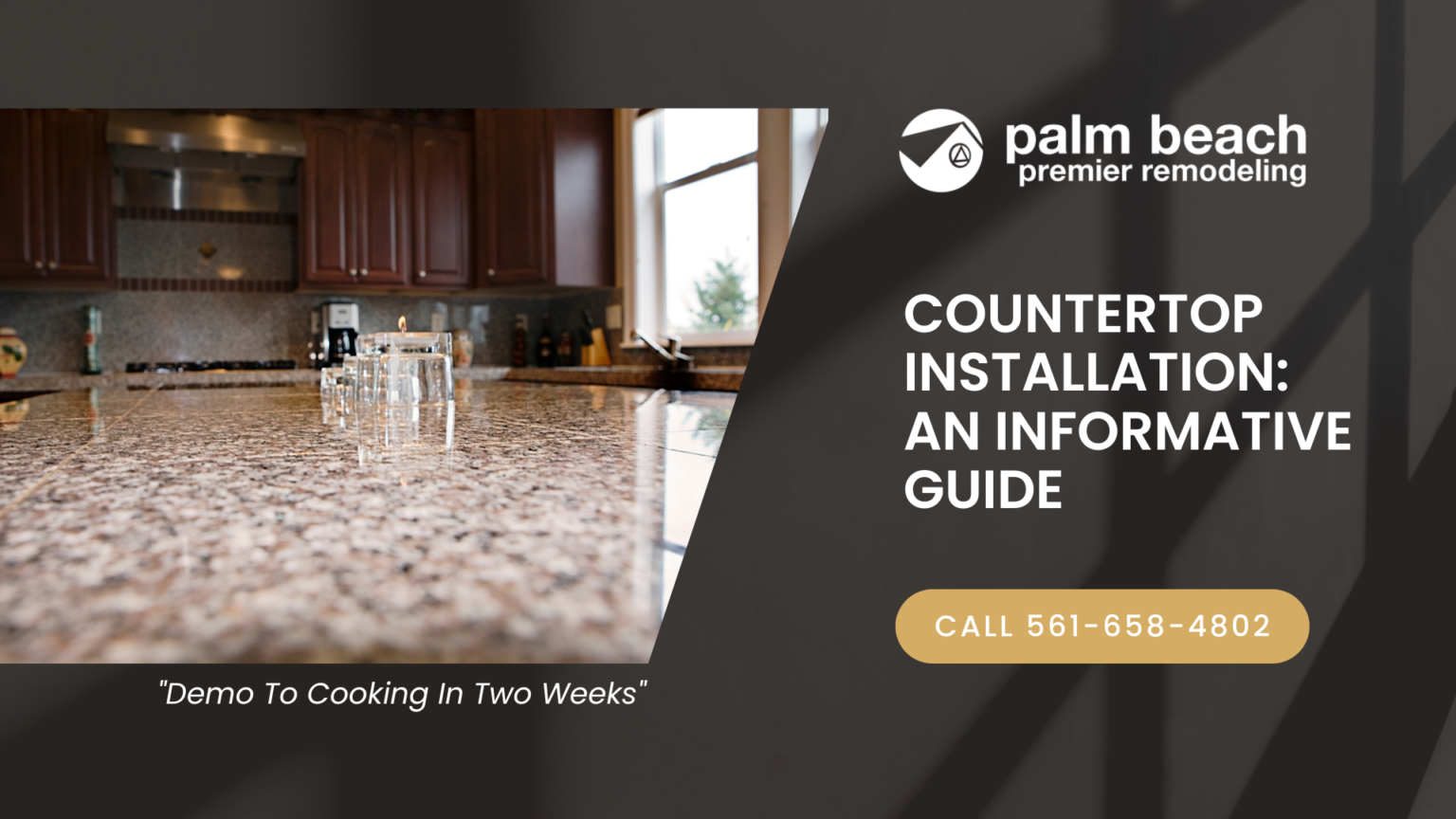When deciding on countertops it helps to understand the different options you have so you can find the type that will work best for you. When you are ready to start your kitchen update we will help you all along the way.
Table of Contents
Common Countertop Materials
There are lots of countertop materials options on the market for kitchen cabinets and countertops, but 10 materials comprise the majority of countertops in residential kitchens. They include granite, marble, quartz, and more. Each material has its positive and negative aspects. For instance, some are very strong while others can be scratched or marred. And some materials cost a lot more than others.
Here are some of the most common options:
Granite Countertop
For some time, granite has been the countertop material of choice when there were no cost issues to consider. Granite defines elegance in a kitchen. Even modest kitchens seem like luxury spaces when flavored by the beauty of granite countertops. According to the Marble Institute of America, you can safely overhang granite that is 1- 1/4″ thick up to 10″ without supports.
Historically, granite has been an expensive material, but its cost has come down somewhat as supplies have increased and engineered stone has become more common. Granite, however, is not suitable for DIY installation as it bears a lot of weight and could crack.
Quartz (Engineered Stone)
The countertop material is known as “quartz” is a stone product that contains as much as 93 percent quartz particles and other minerals, shaped into slabs and bound with resins. These are not solid quartz slabs produced by quarrying. They however can be very heavy and quite expensive.
Despite this, the pros of this type of material seem to outweigh the cons. The pros are:
- Makes your kitchen remodel look gorgeous
- Easy to maintain, no sealing is required
- Slabs are uniform, with no imperfections
- Can be custom-fabricated in any size and shape
- Resists stains and is impervious to heat and acid
- More convincing, natural appearance than the solid surface material
Solid-Surface Countertops
Solid-surface material, sold under brands including Avonite, Corian, and Swanstone, is a man-made material consisting of a blend of acrylic particles and resins that are pressed into sheets and other shapes. Once regarded as premium, luxury countertops, solid-surface material is now considered somewhat mid-tier, but it is still an excellent choice for mid-range kitchens. It can also be good material in high-end kitchens with a lot of countertop space that would be prohibitively expensive to cover with granite or quartz. This must however be installed by professionals as it is impossible to DIY.
Ceramic Tile
A fan favorite, Ceramic tile is durable and easy to clean, and it is considerably less expensive than natural stone, quartz, or solid-surface countertops, especially for DIYers willing to do their work.
Recent innovations in porcelain tiles offer many more design options than ever before, including tiles that look like wood, marble, or even leather or cork. Ceramic and porcelain tiles offer more design options than nearly any other countertop material.
Laminates
The laminates are plastic-coated synthetics with a smooth surface that’s easy to clean. Countertops are made by bonding the laminate sheets to a particleboard (MDF) core. Laminate countertops can be purchased as pre-formed segments (called “post-form countertops”), or custom-fabricated to specifications, either on-site or in a fabrication shop.
The major pros of these are:
- Very easy to maintain
- Thousands of options are available
- DIY installation is relatively easy
- Very inexpensive countertop option
Cabinet making and installation are not always straightforward. Typically, countertops are braced and attached to the tops of cabinets, but with custom designs and remodels, countertops don’t always have what they need to attach correctly. You’ll need to use whatever means necessary to attach countertops firmly to the wall so that they hold up for a lifetime.
In Conclusion
Installing cabinets by yourself could take a bit of time, energy, and extra tools, but it is perfectly possible. Once you successfully install your very own cabinets, make sure to go another round to ensure they are securely fastened to the most substantial support available to create durable cabinets. Ensure that there is no gap between the components of the wall and the supportive elements attaching them as this could cause them to loosen over time. Once your countertop is installed, all you need to do next is decorate to complete your masterpiece and show it off!

